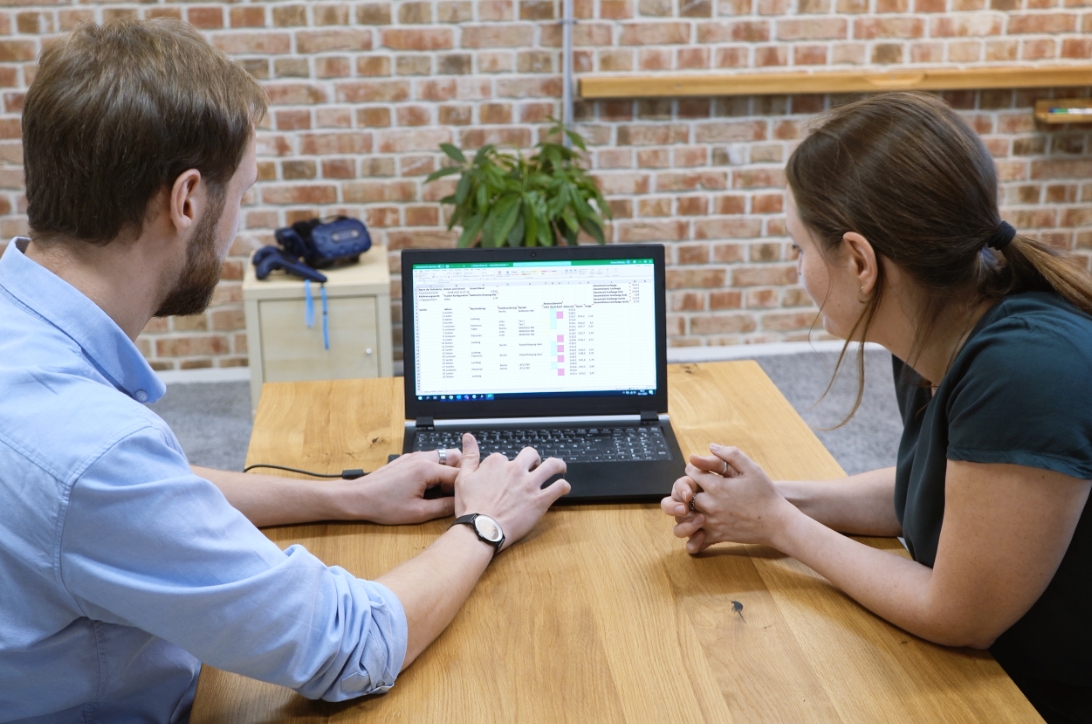Process evaluation in VR — comprehensive analysis through interactive testing
Test and analyze your plans in the virtual factory. Thanks to the natural interaction in VR you can run through workflows and processes. You can easily and individually measure the walking and grasping distances, create added value, avoid waste and increase your efficiency. With Halocline Performance, you can also take ergonomics into account already during the workplace design. This means that you no longer have to wait until the finished workstation has been physically build on your shopfloor.


Recording
You can test and experience the workstations created in Halocline Layout. By playing through assembly processes in the virtual workspace, you will gain an intuitive understanding of the station’s dimensions. Problems, such as too large distances between assembly worker and load carrier on the shelf, become visible at an early stage. Moreover, you can notice unfavorable postures directly on your own body. You can record your movements and play them back in VR at any time. On the one hand, this helps you to compare different variants, and on the other hand it facilitates the exchange with colleagues.
At a glance:
- Natural interaction with the virtual workstation
- Running through different process variants
- Recording of motion sequences
Analyze
In the next step, the recordings are used for the ergonomics and efficiency analysis. The spaghetti diagrams, which you can activate during playback of the recordings, ensure efficiency of motion sequences and distances. You receive information about walking and grasping paths and can check your planning for added value. You can also use the recordings to trace the movements, actions and the viewing direction. Trough the traffic light color coding, ergonomic deficits can be quickly recognized. If, for example, a workbench or shelf is not at the right height for the person concerned, you can make this change at the workstation in Halocline Layout.
At a glance:
- Data visualization of walking and grasp paths (e.g. spaghetti diagrams)
- Ergonomic analysis and adaptation to individuals
- Comparison of variants in terms of process, time and ergonomics


Further use
Work iteratively and make changes to process improvement directly in Halocline Layout. By integrating CAD data you increase the realism of the assembly processes. Coordinate critical moments with the responsible persons for occupational safety and team leaders directly in VR or via video recordings. Using individual calibration you can compare processes with different body sizes. Halocline Performance offers the possibility to segment the recordings into walking and grasp paths and to add annotations. For a quantitative evaluation you can export the data as Excel file. At the same time you create a template for further work in process planning.
At a glance:
- Export of the data in excel files
- Iterating the results with Halocline Layout
- Cross-location process analysis with other disciplines by multi-user



